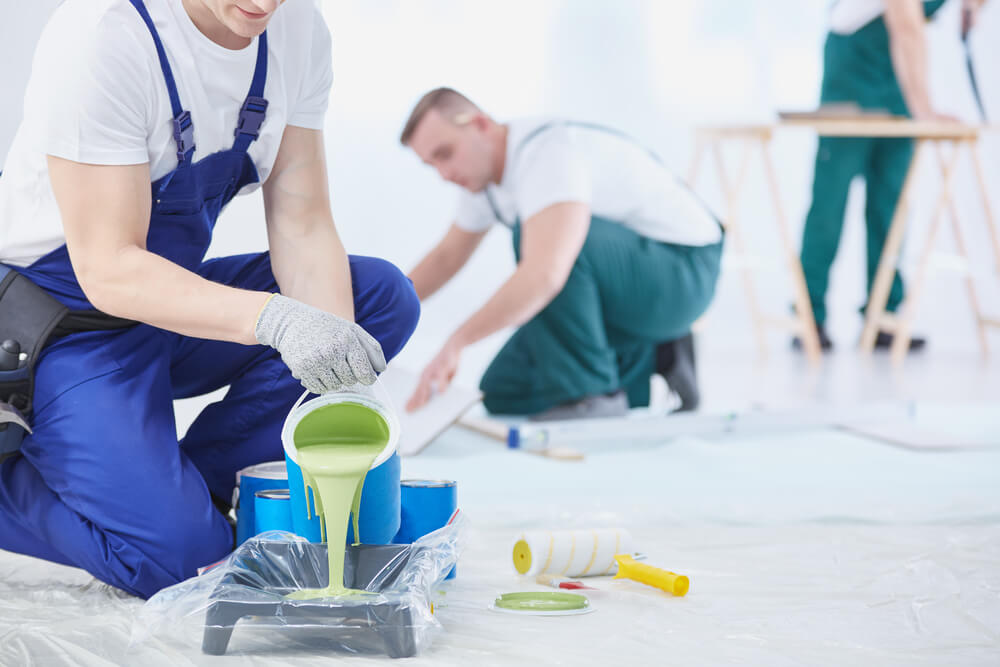How Long Between Coats of Paint?
What's on this Page?
What factors extend paint drying time?How many coats of paint do I need?How to paint your wall
20 March 2023 · Last updated on 20 March 2023
There are three factors involved in getting your timing right - paint type, temperature, and thickness. It is crucial to know the type of paint as varieties come with specific instructions and user guides. Some paints dry faster than others, some take time. Oil-based paints and water-based paints are the two broad divisions.
|
Type of paint |
Estimated drying time |
|---|---|
|
Primer |
30min - 1 hour |
|
1-2hours before the next coat. |
true |
|
Gloss |
1-1½ hours |
|
2 hours before the next coat |
true |
|
Semi-gloss |
|
|
1 hour |
|
|
2 hours before the next coat |
true |
|
Matte |
|
|
30mins - 1 hour |
|
|
1-2 hours before the next coat |
true |
|
Eggshell |
1 hour |
|
2 hours before the next coat |
true |
What factors extend paint drying time?
Temperature: Whether it is an interior or exterior painting, the temperature will impact the dry time. It is recommended to stick to the temperature guideline on the paint for optimal results. Please note that you can speed up the drying time either by getting a fan or heater. Your choice depends on your situation. Thickness: The thickness of the paint layers also influences the dry time. Sometimes, while ensuring that the initial colour on the wall is covered perfectly, a coat may end up becoming thick and as a result, takes a longer time than usual to dry. When painting, at least two coats of paint is recommended for better results. Reasons are; a coat on a wall is just like a sketch on paper i.e uncompleted, not full, or solid. Oftentimes, to get the colour you want, you have to apply 2 - 3 coats of pains. There are two reasons to stick to this recommendation. Durability: paints with 2 or more coats last longer than a single coat painting. Generally speaking, a new home with 2 or more coat painting lasts +10 years while a coat painting barely lasts 4 years before it starts fading or looking rough. Maintenance: The most time-consuming and tedious period is when applying the first coat. It is faster when painting the subsequent layers. This is because the first layer already fixes the cracks and holes while the successive layers are for fine-tuning the surface.
How many coats of paint do I need?
Applying just one coat of paint on a surface can be all you need when you are simply retouching an existing colour i.e. paint retouching.
Two coats
Available colour is a determining factor. For instance, a darker colour over an existing lighter colour should take no more than two coats before it looks smooth and perfect. Some darker colours take more than two coats, therefore, it is important to do the necessary research before painting to prevent unpredictable outcomes.
Three coats or more
Sometimes when painting a light colour over an existing dark colour, it takes more than two coats to get the job done perfectly.
Dry time
This is the time after the first coat. It is important to take your time and let the first coat dry completely before applying the second coat. To be sure the layer is dry, you can gently touch the surface with your finger.
Re-coat time
The re-coat time is very crucial because it is the period that dictates when to apply the next coat. To avoid unnecessary additional costs, stress and time, it is important you take your time at this stage. Do not coat too soon. It is best to wait.
Cure time
This is the final phase. Generally, it takes time before the paint fully dries. When it does, it can be washed or cleaned without any fear of fading.
How to paint your wall
First, you need to clear the space you want to paint. If it's your living room. Clear your electronic appliances and your furniture to make room for the task ahead. Clean the wall before you apply any paint. This will ensure a smooth painting surface. To make sure your painting is as neat as possible, mask your trim so that you can use your brush later on parts that your roller can not reach. This is called cutting-in. Decide on where to start and maintain a gradual movement to avoid random brushing or rolling. Dip your brush into the paint and start painting. Roll and brush the surface of your wall. Pro tip: maintain a consistent pattern when painting. Also, maintain a wet edge so that your roller can blend perfectly with the brushed corners. You can try out the W motion theory — paint in a W motion to ensure even and consistent painting. After the wall is finished, time to start on painting the cornice. After a consistent painting, try to lay off those portions before you continue. Laying-off is a term in painting that simply means putting some finishing touches on the initial paints just to ensure perfection on the wall surface.








